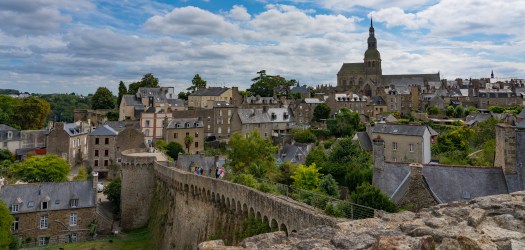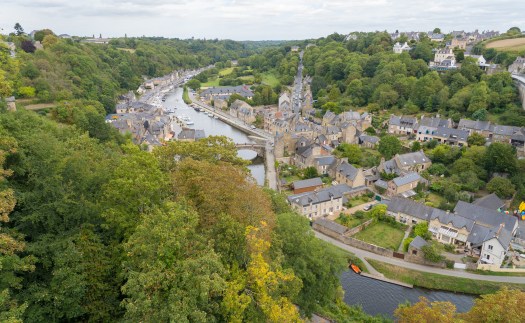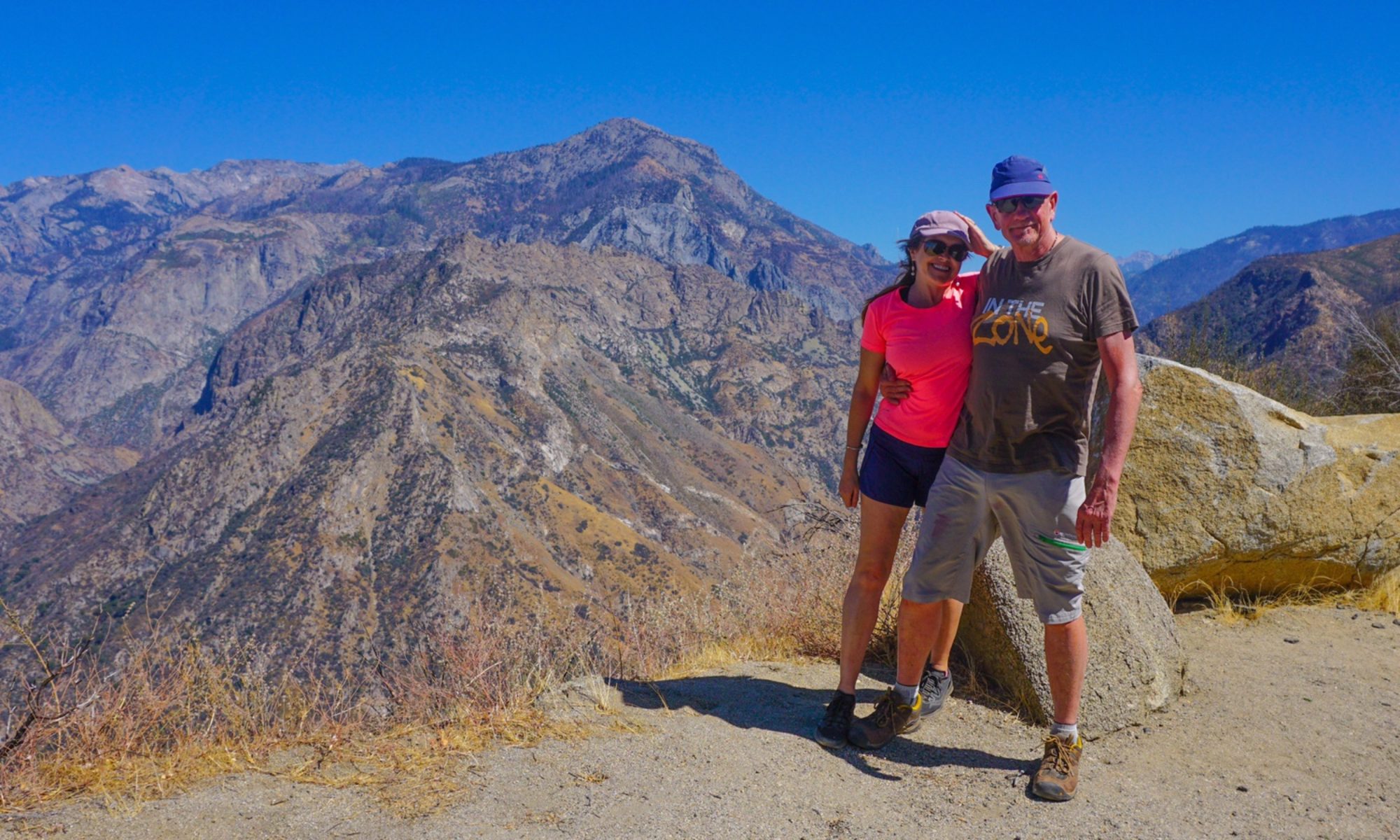Author: Mrs A
Location: Dinan, Léhon and Saint-Malo, Brittany, France
We realised we had very little time to explore Brittany and so decided to speed past a good chunk of the region, heading north towards the town of Dinan.
Dinan was created as a strategic town by combining three villages in the 1100s and much of the city from the past five or six hundred years still remains. The old fortified wall is still intact, stretching for 3km around the city and there are several half timbered houses remaining, carefully protected. Unlike Concarneau’s old town, Dinan is still a living city, with more than just provisions for tourists. There are several art studios around, as well as jewellers, sculptors and other crafts.
We parked up in a free motorhome camping area in the nearby village of Léhon, and strolled up to the city. It was fairly peaceful on Saturday lunchtime, with none of the crowds of Concarneau. Crepes (savoury pancakes) are a regional favourite with several restaurants around the town offering them for lunch…all heavily filled with dairy products, not suitable for me.


We decided to stop at a burger joint for lunch, seemingly the only place to offer food I could eat. They also did an interesting French menu. Mr A bravely decided to go for the plât du jour, which the waitress described as ‘like sausage and chips’. It sounded harmless enough, but once Mr A had cut through the ‘sausage’ I could tell it was anything but! He struggled through a single bite, and offered it to me to smell. Utterly disgusting was the answer. We were soon enlightened by a French couple beside us – Mr A was in fact eating (or not eating) Andoilette – pigs intestines and colon. His face was so horrified the waitress took it away and served him up a chicken burger like mine for no extra charge!
We explored the cobbled streets of the town, enjoying the peace and quiet, and incredible views from the city walls, looking down over La Rance River.








The following morning we were in no hurry to rush off, and the sun was shining again after a showery evening, so we got out the bikes and went for a ride. It was Sunday morning and in France this means family day. Most of the shops are closed too, so people head to the countryside for some fresh air.
We found a shared cycle-walking path alongside the Rance River which started just a couple of minutes from where we were parked up. In no time at all we were riding through beautiful scenery calling out ‘bonjour’ to other cyclists, walkers and joggers as we headed towards Dinan marina and beyond. There is something so lovely about connecting with another human with not much more than just a smile and bidding one another ‘good day’ transcending all differences. This is something that is really missing in towns and cities when often people don’t even look at each other, and frequently are more focused on their phones than what is going on around them. I think people would be shocked in London or Sydney if I went around saying ‘good day’ to strangers!


We rode along through the port of Dinan, past people enjoying their crepes and coffees, yachts moored up for a day of exploring.



We rode as far as possible along the river until the path petered out by a railway bridge. Down here it seemed time had stood still for decades, with old fishing huts teetering on rotting planks and poles that nobody dare cross onto or repair. They look like strange sculptures hanging over the water.


We rode back to the village of Léhon following a path on the other side of the river. Léhon itself is well worth a visit, with its 12th century abbey and very pretty cottages.



We even found an interestingly named restaurant – La Marmite de l’Abbaye…no Marmite on the menu though, sadly!
(Incidentally ‘marmite’ means cooking pot in French, not referring to the salty brewers yeast you spread on toast!)…

After a light lunch back at Truffy, we jumped back on the road, heading towards the coast and the town of Saint-Malo.
Saint-Malo sits on a strategically important location, with a settlement having been there since Roman times (around 1 BCE). After being the home of Saxons and people escaping troubles in England, it was inhabited by monks in the 6th century and became known as Saint-Malo.

During the Middle Ages the walled city became a stronghold for pirates, known as privateers (officially employed by the king of France). It became a very wealthy city from all the loot captured from around the world, and from (mostly English) ships which were forced to pay a ‘tribute’ for passing up the English Channel in safety.


Despite its history, Saint-Malo looks fairly modern today. This is due to the post World War II rebuilding that took place in the 1950s and 60s, using original stone but more modern techniques. It is also a city with money – attracting more than 7.6 million visitors per year with an average of 78,000 visitors a day.

The city was certainly bustling on this Sunday afternoon, with the cobbled pedestrianised roadways full of boutiques, jewellers and restaurants. There was even a boulangerie open for business. Mr A popped in to purchase a Kouign-amann, a sugary, buttery layered pasty cake, native to Brittany. He approved, but tells me the weight of it suggests it had quite a few buttery calories!


We avoided the shops and explored the quieter backstreets, finding our way to the city walls. From there we could see for miles across the sandy beaches, past the fort and on the horizon the islands of Jersey, Guernesey and on to the south west of England…okay, so England was in our imaginations only, but it’s only a ferry ride away from Saint-Malo (just under 9 hours to Portsmouth and about £180 one way with a car and two passengers, in case you’re wondering!).




We had a bit more of an explore and I ducked into the cathedral for a quick look. Built in 1146 on the site of an old church from the 6th century, it too has been restored in the past 50 years after WWII bombing damage. The late afternoon sunlight shone in through the stained glass windows and gave a magical light, showering the walls with rainbows. It was a fine conclusion to our visit as we farewelled Saint-Malo and returned to Truffy to find camp for the night.



